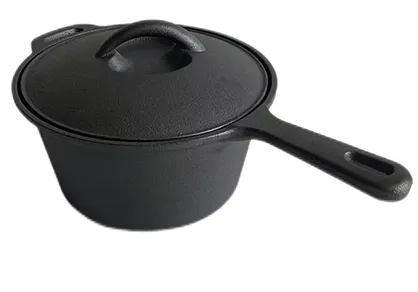
Benefits of Using Seasoned Cast Iron Cookware in Everyday Cooking
The Appeal of Seasoned Cast Iron Cookware
In the world of culinary tools, few items can match the versatility, durability, and timeless charm of seasoned cast iron cookware. This beloved kitchen staple has been embraced by home cooks and professional chefs alike for centuries, proving itself as an indispensable part of any kitchen arsenal. Whether you are searing meats, baking bread, or frying vegetables, seasoned cast iron cookware offers unmatched performance that is hard to replicate with other materials.
The History and Craftsmanship
Cast iron cookware has a rich history dating back to ancient China and was later popularized in Europe during the 18th century. The craftsmanship involved in creating cast iron cookware is a labor of love, combining age-old methods with modern techniques. Each piece is traditionally made from molten iron poured into molds, resulting in a durable product that can withstand high heat and heavy use. Over time, the cookware develops a natural non-stick surface through the process of seasoning, which is essentially the application of layers of oil that polymerize and create a protective barrier.
Advantages of Seasoned Cast Iron Cookware
One of the standout features of seasoned cast iron cookware is its exceptional heat retention and even heat distribution. Unlike many other materials, cast iron heats evenly across its surface, reducing the risk of hotspots that can lead to uneven cooking. This quality makes it ideal for a variety of cooking methods, from slow braising to high-heat searing.
Another advantage is its incredible durability. When properly maintained, cast iron cookware can last for generations, often becoming a treasured family heirloom. The ability to withstand high temperatures makes it perfect for stovetop cooking as well as oven use. Moreover, cast iron is compatible with all types of heat sources, including induction, gas, electric, and even open flames.
Seasoning The Key to Success
seasoned cast iron cookware

The magic of cast iron cookware lies in the seasoning process. When a skillet or pot is seasoned correctly, it develops a natural non-stick surface, allowing for easy food release and minimal cleanup. The seasoning process can be done at home by applying a thin layer of vegetable oil or animal fat and baking the cookware at a high temperature. Over time, further use and seasoning will enhance its non-stick qualities.
Maintaining seasoned cast iron is straightforward, though it requires some TLC. After cooking, it is usually recommended to wipe it clean with a paper towel or rinse it gently with warm water. Using soap or placing it in the dishwasher can strip away the seasoning, so it is crucial to avoid these practices. To restore or enhance the seasoning, occasional reapplication of oil followed by heating can rejuvenate the cookware and keep it in prime condition.
Culinary Versatility
The versatility of seasoned cast iron cookware is another reason for its enduring popularity. It can transition seamlessly from stovetop to oven, making it suitable for a wide range of recipes. You can start off by searing a steak on the stovetop and then transfer the skillet to the oven to finish cooking, all in one piece of cookware. Additionally, it excels at baking, producing beautiful cornbreads, frittatas, and even pizzas.
The aesthetic appeal of seasoned cast iron is undeniable. Many cooks appreciate its rustic, classic look, which adds character to any kitchen. Additionally, it can go from the oven to the table, eliminating the need for an additional serving dish.
Conclusion
In conclusion, seasoned cast iron cookware remains a cornerstone of modern kitchens for good reason. Its remarkable heat retention, unparalleled durability, and versatility make it an essential tool for both novice cooks and seasoned chefs. With proper care and attention, cast iron can provide a lifetime of culinary joy and delicious meals. Whether you are a traditionalist or an innovator in the kitchen, incorporating seasoned cast iron cookware into your cooking repertoire may just be the key to unlocking new culinary possibilities.
-
Season Cast Iron Perfectly with GPT-4 Turbo TipsNewsAug.01,2025
-
High Quality Cast Iron Cookware - Baixiang County Zhongda MachineryNewsAug.01,2025
-
Premium Cast Iron Pan: Durable & Perfect HeatNewsAug.01,2025
-
High Quality Kitchen Durable Black Round Cast Iron Cookware Pancake Crepe Pan-Baixiang County Zhongda Machinery Manufacturing Co., Ltd.NewsAug.01,2025
-
Cast Iron Cookware - Baixiang County Zhongda Machinery | Nonstick, Heat ResistanceNewsAug.01,2025
-
High Quality Kitchen Durable Black Round Cast Iron Cookware - Baixiang County Zhongda Machinery | Non-Stick, Heat Retention, DurableNewsJul.31,2025


